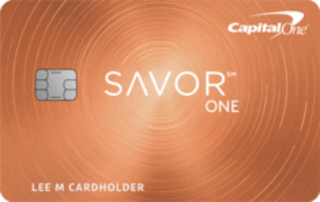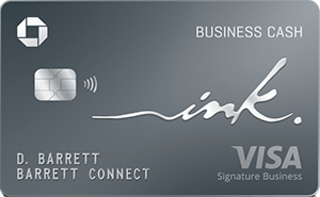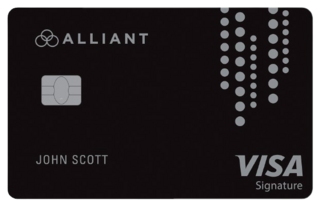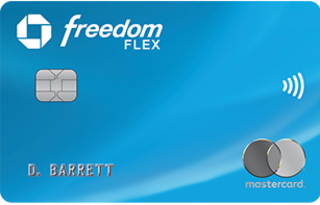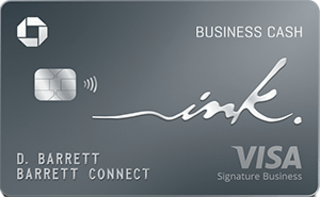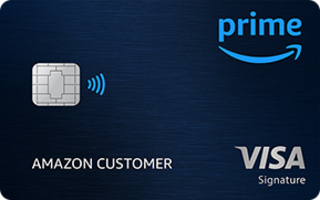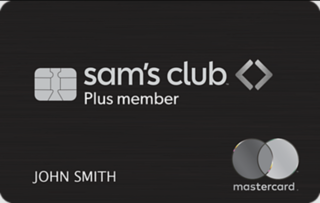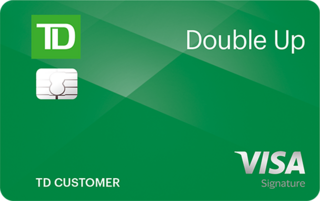11 Best Cash Back Credit Cards of 2024
Money.com has partnered with CardRatings.com for our coverage of credit card products. Money and CardRatings may receive a commission from card issuers. Our site does not include all card companies or all available card offers.
Getting something back for your everyday purchases is probably one of the best reasons to use a credit card.
While most cards on the market offer a variety of rewards and perks, the best cash back credit cards will reward you in an easy, tangible way: by giving you a fixed percentage of what you spend, delivered right to your account or, in some cases, your door in the form of a check.
Read our guide to find out which cards offer the highest cash back rates and choose the right one for you.
Our Top Picks for Cash Back Credit Cards of 2024
- Alliant Cashback Visa® Signature Credit Card — Highest Cash Back Rate
- Bank of America® Customized Cash Rewards Credit Card — Best Cash Back Card for Custom Categories
- Blue Cash Preferred® Card from American Express — Best Cash Back Card for Groceries
- Capital One Savor Credit Card — Best Cash Back Card for Dining
- Capital One SavorOne Cash Rewards Credit Card - Best No-annual-fee Cash Back Card for Dining
- Chase Freedom Flex® — Best Cash Back Card for Rotating Categories
- Chase Freedom Unlimited® — Best Cash Back Card with No Annual Fee
- Ink Business Cash® Credit Card — Best Cash Back Card for Business
- Prime Visa— Best Cash Back Card for Retail
- Sam’s Club® Mastercard® — Best Cash Back Card for Gas
- TD Double Up℠ Credit Card — Best Flat-rate Cash Back Card
- Other cash back credit cards we considered
Best Cash Back Credit Cards Reviews
The cards in our top picks are listed in alphabetical order.
- High 2.5% cash back on eligible purchases up to $10,000 per billing cycle (for Tier One customers)
- Visa Signature® benefits such as purchase and identity theft protection
- No foreign transaction fee
- No annual fee
- Cardholders must comply with certain requirements to get the 2.5% rewards
- No introductory offer
- Insurance and protection
- Purchase protection, extended warranty, identity theft protection, travel accident insurance, rental collision waiver
- Annual fee:
- $0
Why we chose it: Alliant’s credit card offers a 2.5% cash back on every qualifying purchase up to $10,000 spent monthly. That’s a potential $3,000 in cash back per year.
This card by Alliant Credit Union offers the highest flat-rate cash back around: 2.5% on every purchase, up to the first $10,000 spent per billing cycle, and a fairly high 1.5% after that.
However, to qualify for the 2.5% earning rate, you have to be an Alliant Tier One customer. Cardholders must have an Alliant High-Rate Checking account, keep an average daily balance of $1,000 or more, sign up for eStatements and make at least one electronic deposit a month.
This could be onerous or even inaccessible for some potential customers, but if you can meet these requirements, the 2.5% will be well worth it.
The card also includes significant perks like travel accident insurance, purchase protection and other warranty policies. This makes the Alliant Cashback Visa® Signature Credit Card a very complete package that, when paired with no annual fee, can yield enormous savings.
All information about the Alliant Cashback Visa® Signature Credit Card has been collected independently by Money.com. It has not been reviewed or provided by the issuer.
- 3% back in the category of your choice and 2% back at grocery stores and wholesale clubs (up to $2,500 each quarter on combined purchases)
- Preferred Rewards members could get even more cash back
- Spending cap for bonus rewards is low
- No insurance
- Insurance and protection
- Standard fraud protection
- Annual fee:
- $0
Why we chose it: The Bank of America® Customized Cash Rewards Credit Card allows cardholders to choose from a long list of categories the ones that yield the most rewards for them.
As its name suggests, with this card you can choose a category each quarter from dining, gas, travel, drugstores, online shopping and home improvement or furnishing to get the most cash back:
- 3% back on a category of your choice up to $2,500 each quarter, 1% thereafter
- 2% back at grocery stores and wholesale clubs up to $2,500 combined with 3% category
- 1% back on all other qualifying purchases
Preferred Rewards members, who must comply with hefty checking account requirements ($20,000 three-month combined daily average to qualify for the lowest Gold Tier), can earn even more. Gold members could earn 3.75% cash back on their custom category, for example, and all the way up to 5.25% for Platinum and Diamond members.
On the downside, the Bank of America® Customized Cash Rewards Credit Card doesn’t provide added features beyond standard services such as fraud and overdraft protection.
All information about the Bank of America® Customized Cash Rewards Credit Card has been collected independently by Money.com. It has not been reviewed or provided by the issuer.
- 6% back at U.S. supermarkets up to the first $6,000 each year (1% thereafter)
- 6% back on select U.S. streaming subscriptions
- 3% back on transit (including public transportation, taxis, public transportation and more)
- annual_fees
- 2.7% foreign transaction fee
Terms apply. Click here for rates and fees.
- Insurance and protection
- Car rental loss and damage insurance, purchase protection and return protection*
Intro APR: intro_apr_rate,intro_apr_duration and balance_transfer_intro_apr,balance_transfer_intro_duration│ Regular APR: reg_apr,reg_apr_type│ Annual Fee: annual_fees
Why we chose it: The Blue Cash Preferred® Card from American Express offers incredibly high rewards, especially when it comes to groceries and transportation.
The Blue Cash Preferred® Card from American Express is the best cash back American Express® card. It offers one of the highest cash back rates on groceries and transit, making it an excellent choice for regular spending:
- 6% back at U.S. supermarkets up to the first $6,000 spent per year (1% thereafter)
- 6% back on select U.S. streaming subscriptions (including Netflix, Hulu and more)
- 3% back at U.S. gas stations and on transit-related purchases (including taxis/rideshare, parking, tolls, trains, buses and more)
- 1% back on eligible purchases
- Terms apply
Although it does not charge an annual fee for the first year, it does charge a $95 annual fee after that. While the benefits might be worth it for some people, they might not be for people whose grocery shopping is minimal or who don’t commute much.
A no-annual-fee alternative is The Blue Cash Everyday® Card from American Express. It offers 3% back on eligible purchases at U.S. gas stations and 6% back at U.S. supermarkets, up to $6,000 per year, and 1% after. (Terms apply. To see rates and fees of the Blue Cash Everyday® Card from American Express, please visit this link.)
- Unlimited 4% back on dining, entertainment and select streaming services
- 3% back at grocery stores (excluding Walmart®, Target® and wholesale clubs)
- 8% back on purchases booked through Capital One Entertainment
- No foreign transaction fee
- $95 annual fee
- Insurance and protection
- Extended warranty and travel accident insurance
- Annual fee:
- $95
Why we chose it: The Capital One Savor Rewards Credit Card is practically custom-made for a good night out, offering high rewards on dining as well as entertainment.
Many cards offer bonus rewards on dining and takeout; however, if your week regularly includes date nights and hitting the town to catch games and live shows, few come close to the Capital One Savor Rewards Credit Card.
This card is designed to reward a great night out. Categories include:
- 8% back on ticket purchases through Capital One Entertainment
- 4% back on dining and entertainment, including concerts, movies, sporting events and more
- 5% back on hotels and rental cars booked through Capital One Travel (terms apply)
- 3% back at grocery stores, excluding superstores like Walmart® and Target®
- 1% back on all other qualifying purchases
Whether going out or staying in and cooking dinner, this card has you covered.
Keep in mind that this version of the card has a $95 annual fee. If that’s a deal-breaker, check out our next pick, the no-annual-fee Capital One SavorOne Cash Rewards Credit Card.
All information about the Capital One Savor Rewards Credit Card has been collected independently by Money.com. It has not been reviewed or provided by the issuer.
- No annual or foreign transaction fee
- Unlimited 3% back on dining, entertainment and select streaming services
- 3% back at grocery stores, excluding superstores like Walmart® and Target®
- Reward rate is lower than some competitors
- Insurance and protection
- Travel accident insurance and extended warranty
Intro APR: intro_apr_rate,intro_apr_duration and balance_transfer_intro_apr,balance_transfer_intro_duration│ Regular APR: reg_apr,reg_apr_type│ Annual Fee: annual_fees
Why we chose it: This no-annual-fee option offers very high rewards on dining and entertainment without having to make up for a yearly cost.
While the Capital One Savor Rewards Credit Card offers a higher reward rate on dining and entertainment, its no-annual-fee counterpart offers plenty of rewards of its own. These include:
- 8% back on ticket purchases through Capital One Entertainment
- 5% back on hotels and rental cars booked through Capital One Travel (terms apply)
- 3% back on dining, entertainment and select streaming services
- 3% back at grocery stores, excluding wholesale clubs and superstores like Walmart® and Target®
- 1% back on all other qualifying purchases
As with many Capital One cards, this card also gives you access to Capital One Dining which comes with even more benefits including exclusive reservations at great restaurants and specialized dining experiences with top chefs.
Note that this card does require excellent credit; however, Capital One has yet another version of this card meant for good (not excellent) credit — the Capital One SavorOne Cash Rewards for Good Credit.
- 5% back on rotating quarterly categories
- Unlimited 5% back on travel through Chase Ultimate Rewards®
- Offers cell phone protection along with other insurance
- 1% base rate on all other purchases
- 3% foreign transaction fee
- Annual fee
- $0
- Insurance and protection
- Purchase protection, extended warranty, trip cancellation/interruption insurance, cell phone protection, rental collision waiver
Why we chose it: The Chase Freedom Flex® packs great rewards and perks; add on the 5% cash back on quarterly categories and it’s easily one of the best cards in the category.
The Chase Freedom Flex® Credit Card has quarterly rotating categories, but offers much more than that:
- 5% back on quarterly bonus categories (up to $1,5000 on combined purchases in the quarterly categories)
- Unlimited 5% back on travel booked through Chase Ultimate Rewards®
- Unlimited 3% back on dining at restaurants (including takeout and eligible delivery services)
- Unlimited 3% back on drugstore purchases
- Unlimited 1% back on all other qualifying purchases
The categories for each quarter depend on Chase’s cash back calendar; for example, you could get 5% back on gas one quarter, followed by the same rate of rewards on purchases at Amazon the next.
It also offers significant insurance coverage, which is rare for cards with no annual fee. It has trip cancellation and delay insurance, cell phone protection, extended warranties, purchase protection and more.
All information about the Chase Freedom Flex®Credit Card has been collected independently by Money.com. It has not been reviewed or provided by the issuer.
- Unlimited 5% back on travel if you book through Chase Travel℠
- Unlimited 3% on dining and drugstore purchases
- 3% foreign transaction fee
- Insurance and protection
- Purchase protection, extended warranty, trip cancellation/interruption insurance, rental collision waiver
Intro APR: intro_apr_rate,intro_apr_duration and balance_transfer_intro_apr,balance_transfer_intro_duration│ Regular APR: reg_apr,reg_apr_type│ Annual Fee: annual_fees
Why we chose it: The Chase Freedom Unlimited® offers more bonus categories and insurance coverage than most no-annual-fee cards.
The Chase Freedom Unlimited® offers some of the highest reward rates of any no-annual-fee cards, including:
- Unlimited 5% back on travel purchased through the Chase Travel℠ portal
- Unlimited 3% back on dining and drugstore purchases (including takeout and eligible delivery services)
- Unlimited 1.5% back on all other qualifying purchases
- Due to a new cardmember offer, the first $20,000 spent during the first year will earn an additional 1.5% cash back, which means 6.5% on travel through Chase Travel℠, 4.5% on dining and 3% on every other eligible purchase.
The Chase Freedom Unlimited® also offers rental collision waiver and flight cancellation insurance, which, along with its high 5% cash back rate on travel make it one of the best cards to use when booking your trips.
However, it does have a 3% foreign transaction fee, so it might not be the best option to use when you’re abroad.
Finally, Chase Ultimate Rewards® frequently provides promotional offers for cardholders, and you can often get up to 20% cash back at specific stores upon activation.
- 5% back on the first $25,000 spent in combined purchases at office supply stores and on internet, cable and phone services each account anniversary year
- 2% back up to the first $25,000 spent annually in combined purchases made at gas stations and restaurants
- Primary rental car insurance
- bonus_miles_full
- Low spending caps on bonus categories
- 3% foreign transaction fee
- Insurance and protection
- Primary rental insurance, purchase protection, extended warranty protection
Intro APR: intro_apr_rate,intro_apr_duration│ Regular APR: reg_apr,reg_apr_type│ Annual Fee: annual_fees
Why we chose it: The Ink Business Cash® Credit Card by Chase offers high cash back rates on business-related expenses and great insurance coverage for no annual fee.
This business card by Chase offers a whole lot of value for its $0 annual fee, beginning with high rewards on a variety of business expenses, including:
- 5% back on the first $25,000 in combined purchases at office supply stores and on internet, cable and phone services each account anniversary year
- 2% back on restaurants and gas stations up to $25,000 combined annually
- 1% back on other qualifying purchases
The card offers purchase protection and extended warranty, as well as primary rental car insurance when renting a vehicle for business purposes, which is a major benefit.
Unfortunately, it doesn’t offer any travel perks and charges a foreign transaction fee of 3%. For additional and travel-related benefits, other point-based cards offer much more but with the cost of an annual fee.
- Unlimited 5% on Amazon shopping with eligible Prime membership
- Unlimited 2% on dining, gas and local transit and commuting
- Great protection and insurance benefits
- 1% base rate
- Must be a Prime member to enjoy highest rewards
- Insurance and protection:
- Travel accident insurance, lost luggage reimbursement, baggage delay insurance, rental collision waiver, extended warranty, purchase protection
Intro APR: intro_apr_rate,intro_apr_duration │ Regular APR: reg_apr,reg_apr_type │ Annual Fee: annual_fees
Why we chose it: With one of the highest store-specific cash back rates, and one of the largest product selections in the world, the card_name can get you hundreds of dollars back a year.
If you’re an eligible Prime member, this card will give you an outstanding 5% every time you purchase something on Amazon.
That’s not all it offers, though, as there are more categories and more chances to earn:
- Up to 10% back on select Amazon products
- Unlimited 5% back on Amazon and Whole Foods purchases
- Unlimited 2% back on dining, gas and local transit or commuting
- Unlimited 1% back on all other qualifying purchases
While you could also get the Amazon Prime Store Card and get 5% cash back, the Prime Visa by Chase offers significant benefits beyond that, such as travel accident insurance, rental car collision waiver, luggage reimbursement, purchase protection and more.
If you’re already a Prime member and do a lot of your shopping in Amazon-affiliated sites or stores, including using AmazonPay, this card is one of your best ways to get rewarded for it.
- 5% back in Sam’s Cash on gas up to the first $6,000 spent per year (1% thereafter)
- 3% back in Sam’s Cash on dining and takeout
- 3% back in Sam’s Cash at Sam’s Club for Plus members
- Needs a Sam's Club membership
- Only 1% back at Sam's for non-Plus members
- Insurance and protection
- Standard fraud protection
- Annual fee:
- $0 but must be a Sam’s Club member
Why we chose it: Plain and simple, no other card offers 5% back on gas like the Sam’s Club® Mastercard® does — this, in addition to other great benefits, makes it a great option for avid Sam’s Club shoppers.
The Sam’s Club® Mastercard® is not just for wholesale shopping. Its rewards program also includes the following cash back categories:
- 5% back in Sam’s Cash at U.S. gas stations up to the first $6,000 spent per year (1% thereafter)
- 3% back in Sam’s Cash on dining and takeout
- 3% back in Sam’s Cash on Sam’s Club purchases for Sam’s Plus members
- 1% back in Sam’s Cash on all other qualifying purchases
- Cardholders can earn a maximum of $5,000 in Sam’s Cash in a calendar year
The card’s 5% back at U.S. gas stations is the highest of its kind. If you commute long hours or drive a gas-guzzler, that’s $300 of cash back each year, in addition to what you’ll earn at the 1% rate after that first $6,000 you spend.
You can use all this cash back to pay at any Sam’s Club, both physically and online, or redeem it for actual cash at the cash register.
If you frequent the other major wholesale club, check out the Costco Anywhere Visa® Card by Citi, which offers 4% on gas up until the first $7,000 spent per year, and 1% afterwards.
All information about the Sam’s Club® Mastercard® has been collected independently by Money.com. It has not been reviewed or provided by the issuer.
- 2% cash back on all eligible purchases
- bonus_miles_full
- Extended warranty protection
- No bonus categories
- Some of the insurance services kick in after being approved for a credit limit of $5,000 or more
- In order to qualify, applicants must be residents of CT, DC, DE, FL, MA, MD, ME, NC, NH, NJ, NY, PA, RI, SC, VA or VT
- Insurance and protection:
- Cell phone protection, purchase security, extended warranty protection, lost luggage reimbursement, travel accident insurance
Intro APR: balance_transfer_intro_apr,balance_transfer_intro_duration│ Regular APR: reg_apr,reg_apr_type│ Annual Fee: annual_fees
Why we chose it: The card_name not only offers a high flat rate of 2% cash back, it also comes with the most extensive array of insurance-related perks of any card in its category.
The TD Double Up℠ Credit Card offers hassle-free 2% cash back. In other words, there are no special requirements or bonus categories, just 2% back on eligible purchases across the board.
In addition to that, it offers the most insurance coverage out of all cards with a 2% flat rate, which makes it an excellent all-around option. There’s a small catch, however — if your credit limit is below $5,000, only cell phone protection applies. Once a cardholder is approved for $5,000 or more, reaching Visa Signature status, they’ll qualify for the other insurance policies.
Unfortunately, the card is not available across the country. It's limited to the states in which TD Bank is present (CT, DC, DE, FL, MA, MD, ME, NC, NH, NJ, NY, PA, RI, SC, VA and VT).
Other cash back credit cards we considered
Apple Card
- 2% whenever using Apple Pay
- 3% on Apple, Uber, Walgreens and anything bought through iTunes
- Fastest cash back program in the industry
- No welcome offer
- Rate drops to 1% if you use the physical card instead of Apple Pay
Apple’s credit card provides one of the most intuitive and transparent ways to pay out there if you’re using Apple Wallet. It also has great rewards that are paid almost instantaneously. However, its lack of intro offers and the need to use Apple Pay to earn these high rewards leaves it out from our top picks.
All information about the Apple Card has been collected independently by Money.com. It has not been reviewed or provided by the issuer.
Capital One Spark Cash Plus
- Unlimited 2% on all qualifying purchases
- 5% on travel through Capital One Travel
- Extended warranty
- No travel-related insurance or statement credits
- High $150 annual fee
Intro APR: balance_transfer_intro_apr,balance_transfer_intro_duration│ Regular APR: reg_apr,reg_apr_type│ Annual Fee: annual_fees
This business card from Capital One provides unlimited 2% cash back on all qualifying purchases, as well as 5% on travel and rental cars when booked through Capital One Travel. Although it has a high $150 annual fee for its rewards, it does offer a full $150 refund after spending $150,000 in a year. However, for businesses spending that much, there are better options with many more benefits.
Citi Custom Cash® Card
- 5% back on user's highest spending eligible category up to $500 each billing cycle, 1% thereafter
- $500 spending limit on 5% rate can be too low for some users
- 1% base rate
The Citi Custom Cash® Card is similar to a rotating categories card, but personalized. It offers 5% cash back on the cardholder’s most used eligible category each billing cycle, on up to $500 a month. While it’s a great card, its low spending cap for extra cash back, along with the absence of bonus categories, leaves it a little behind other options.
All information about the Citi Custom Cash® Card has been collected independently by Money.com. It has not been reviewed or provided by the issuer.
Citi Double Cash® Card
- 2% cash back on all purchases - 1% when you buy, 1% when you pay your balance
- No bonus categories
The Citi Double Cash® Card is a solid cash-back option, giving back 2% on all purchases — 1% when you buy, and 1% when you pay your card. It’s also a great option for a balance transfer card. However, while its cash-back rate is good, it’s not as high as many others on this list.
All information about the Citi Double Cash® Card has been collected independently by Money.com. It has not been reviewed or provided by the issuer.
Discover it® Cash Back Credit Card
- Earn 5% Cashback Bonus on quarterly categories up to $1,500 (activation required)
- Cash back earned is matched at the end of your first year
- Usually has a good welcome offer
- Only 1% base rate
- No additional spending categories
The Discover it® Cash Back Credit Card offers a cash back match during the first year, meaning it doubles however much you earned at the end of the year. However, once you lose that perk after the first year, its reward rate isn’t as high as many competitors’.
All information about the Discover it® Cash Back Credit Card has been collected independently by Money.com. It has not been reviewed or provided by the issuer.
SoFi Credit Card
- 3% cash back when booking trips through SoFi Travel
- 2% cash back on all eligible purchases
- No foreign transaction fee
- Rewards are not redeemable outside of SoFi accounts
- Points are only worth $0.005 when used as statement credits
This SoFi card has an interesting approach to rewards, prioritizing redemption within SoFi. You get 3% cash back on travel through SoFi Travel and 2% on all other eligible purchases. However, it’s actually a system of points that equates to a cent each (like cash back) only when redeemed for shares or deposited into a SoFi account. The rate drops considerably when used as a statement credit and can’t be redeemed as cash outside of SoFi.
All information about the SoFi Credit Card has been collected independently by Money.com. It has not been reviewed or provided by the issuer.
Wells Fargo Active Cash® Card
- 2% back across the board on all purchases
- No annual fee
- Often has valuable introductory offers
- Cell phone protection
- No bonus categories
- Foreign transaction fee
The Wells Fargo Active Cash® Card is a great option if you don’t want to keep track of what categories yield the highest rewards. With 2% cash back on all eligible purchases, you’ll get solid rewards every single time. It also offers cell phone protection. It didn’t make our list, however, because competitors are offering a wider array of insurance options.
All information about the Wells Fargo Active Cash® Card has been collected independently by Money.com. It has not been reviewed or provided by the issuer.
Cash Back Credit Cards Guide
Credit cards can be complicated. Calculating and evaluating points versus cash back can be confusing, plus other rewards, perks and insurance policies are hard to keep track of.
In this guide, you’ll find information about cash back rewards specifically, how they work and how to choose the right card for your purchasing habits.
What are cash back credit cards?
Although it sounds too good to be true, cash back credit cards do just that: they give you a small amount of your spending back. Unlike points, which are subject to the issuer’s rewards program and formulas, cash back corresponds to dollar value. That is, if you spend $100 and your credit card offers 1% cash back, you’ll get $1 back in your account.
Depending on your preference, cash back earnings can be used as statement credits to bring down your card balance or as points, which you can then redeem for certain products and services. Alternatively, it can be actual cash added to your bank account via direct deposit.
It’s important to note that different terms apply to different credit cards, and “qualifying purchases'' or “eligible purchases” can mean different things. In some cases, qualifying purchases can mean those from specific stores or categories, while in other cases, some purchases yield no cash back at all.
However, in most credit cards (and all of our picks), this typically means you won’t get cash back for transactions such as money orders, balance transfers, peer-to-peer (P2P) payments or similar transactions.
Types of cash back credit cards
Most credit cards feature a specific type of reward structure, such as a flat cash back percentage on all purchases or the use of bonus categories, in which the cardholder earns bonus rewards for purchases of a certain brand or kind of product or service. Some cards might combine aspects of both of these reward structures and use a hybrid approach.
These are the main types of cash back you’ll find:
Flat rate credit cards
Flat rate credit cards have a fixed cash back percentage across the board. Anything you purchase, with the exception of money orders, fee payments and similar transactions, will earn the pre-established percentage.
Most flat rate cards have a higher cash back base rate than other types, typically 1.5% or 2%. However, unlimited flat rate cards usually do not have bonus categories that can garner you higher cash back rates.
Bonus categories or tiered rewards credit cards
Many cards offer higher cash back rates in special categories — in some cases, much higher. The categories can vary widely and depend on the type of card you get. For example, a specialized dining card may earn you bonus cash back at restaurants, while a card partnered with a specific store might give extra rewards or special discounts on purchases with that retailer.
These rewards are usually tiered. For example, a card can offer 4% back on gas, 3% at drugstores, 2% on streaming and 1% on everything else. This minimum on everything else is regularly referred to as the base rate.
Rotating or quarterly categories cards
Some cards offer a set rate of cash back, but change categories throughout the year. For instance, a card can offer 5% on gas during the first quarter of the year, and then 5% on travel during the second.
This method usually requires activation on the user’s part and regular attention to see what the calendar brings next.
Custom categories cards
Some credit card issuers let users choose a specific bonus reward category every quarter from a preselected list.
However, this method, just like rotating categories, tends to have a low spending cap for bonus rewards and requires activation.
Cash back categories
While they reward spending differently, most cards use Merchant Category Codes (MCCs) to identify purchases and then reward each one differently.
How issuers group and reward these categories can be flexible, however, which can work in your favor or not, depending on your shopping habits. For example, if you buy groceries at a drugstore, you’ll get the rate awarded to drugstore purchases, not supermarkets. With some cards, that means higher rewards; with others, it’s a lost opportunity.
These are some of the most common cash back categories:
Restaurants. This includes restaurants, fast foods, cafes and most sit-down establishments. Some issuers use the word dining, which can sometimes (but not always) include takeout and delivery services.
Gas stations. This rewards you when paying at the pump, but it might also include other purchases at the gas station. Another possible category is transit, which typically includes gas, along with public transportation, paytolls, taxis, parking and more.
Travel. Travel doesn’t just include airfare, but hotels and rental cars as well. While most popular travel-focused cards use points systems, there are some cash back options with high travel rewards when you use their digital portals for booking vacations.
Supermarkets. Often specified as “U.S. Supermarkets,” this is just what it sounds like. However, in many cases the category excludes wholesale stores like Costco and stores such as Walmart® and Target®. This category of spending can also be called groceries.
Retailers. Some stores tend to offer high reward rates if you use their co-branded cards at their retail locations. In this case, it’s not so much a category but benefits you can get from purchases made with a particular store or brand.
Streaming services. Some cards offer high rewards on select streaming services, which considering all the current options, can amount to quite a bit. Be sure to check each issuer’s list of approved services to ensure your favorites are included.
Utilities. Bills such as energy, water and internet can be categorized as utilities and yield higher rewards with certain cards.
Business expenses. Although “business expenses” is not a category of its own, the best business credit cards often reward business-related expenses such as telecommunication services, shipping services or advertising and marketing. These are all separate categories, so make sure you look at which one each card offers.
Pros and cons of cash back credit cards
There are two main types of rewards structures: points and cash back. While cash back is fairly straightforward, points are often measured by the issuers’ own systems. Many platforms, like Chase Ultimate Rewards®, use points as equivalent to cash back, with each point worth a cent. However, not all are as simple and points can change dramatically in value depending on how you use them.
If you want a more in-depth look at credit cards all around, and the differences between rewards structures, you can check out our article on the best credit cards, which takes a look at credit cards of all types.
Here are some advantages and drawbacks of cash back over points.
- Cash back is literally money in your pocket.
- Cash back is simple and easy to calculate.
- Cash back can be used to pay back the credit card itself.
- Introductory offers often feature reduced interest charges and can provide extra cash back.
- Cash back's value is often static, while redemption options for points are more flexible.
- Cash back cards usually have fewer perks than premium, point-based cards.
- Rewards could give false sense of saving, driving users deeper into debt.
- Annual fees could outweigh rewards.
How to choose a cash back credit card
In the process of applying for a cash back credit card, you should take into account your personal finances and spending habits as well as other factors.
Here are some things to consider before filling the application.
1. Your credit status
When you apply for a credit card, lenders take into account your income, your debt-to-income ratio and your FICO score, among many other factors.
If you’re just starting out, begin by learning what is a credit score and how to build credit. You could also take a look at the best credit cards to build credit if your credit history is limited or your score isn’t in the good to excellent range yet.
2. Consider spending habits when looking at rewards rates
If you’re looking for the best cash back credit cards, it means you’re in it for the rewards. Analyze and compare the different tiers of cash back offered by each card and evaluate how much you spend in each category.
For example, a big family or an avid home chef might benefit from high rewards on groceries, while someone who doesn’t have a particular category that accounts for a lot of their monthly expenses could be better off with a flat-rate option.
3. Calculate whether the annual fee is worth it
While cash back cards don’t typically charge high annual fees, you’ll still have to analyze whether the rewards make up for the fee. Say you manage to earn $1,000 in cash back with a 2% cash back card, but have to pay a $95 annual fee. Your yearly cash back total will be $905. But if you could instead make $950 with a 1.5% cash back card that doesn’t charge an annual fee, you’d be better off.
4. Compare introductory offers
Most cards include intro offers to lure applicants. Some are in the form of introductory bonuses, giving $50 to over $1,000 after the cardholder reaches a spending requirement within a few months from the account opening.
Some cards also have a promotional period with a 0% introductory APR offer on purchases and, possibly, balance transfers for up to 21 months. The best cards tend to have a combination of these offers.
5. Compare cardholder benefits
Other than monetary rewards like cash back and gift cards, some cards offer an array of benefits that can include travel insurance and purchase protection.You may also find luxury travel benefits such as priority boarding, restaurant reservations or airport lounge access, though these are more likely found on the best travel credit cards, which work with points.
6. Compare interest rates
A couple of percentage points in interest rates can make a huge difference in the long run. Make sure to look at and compare regular and variable APRs — that is, the rate you’ll be charged after any promotional introductory period is over — to know what to expect.
How to maximize cash back rewards on credit cards
Accumulating cash back from one of these cards is, for the most part, very hands off. But there are some steps you can take to maximize the cash back and overall benefits you earn.
Choose the right card for you
Choosing the right card for your lifestyle and spending habits is paramount. For example, if you have a large family and spend quite a bit on groceries, getting the Blue Cash Preferred® Card from American Express is a great idea. However, if you do little cooking and dining out is more your style, a card like the Chase Freedom Unlimited® would be more fitting.
Earn your welcome offer
Most cash back credit cards have a relatively low spending requirement to earn their welcome bonuses. Make sure to use your card enough during the first few months so that you don’t miss out on that bonus.
Use the right card for each purchase
If you have multiple cards, make sure to analyze their reward rates and use them for the categories that will pay off the most. For instance, you can use the Capital One SavorOne Rewards Credit Card, which offers a high reward rate on dining, for nights out, and the Blue Cash Preferred® Card from American Express for grocery shopping.
Stay up to date with rotating categories and limited time offers
If your cards have rotating bonus categories, take a close look at the issuer’s category calendars to make sure your spending aligns with the highest reward rates. Also, look at limited time offers even for cards without rotating categories. Chase Ultimate Rewards®, for example, tends to issue offers with up to 20% back on specific brands or stores. You never know how timely one of those offers could be.
Use the issuer’s portal
Using the issuer’s portal can increase the value of your rewards or earn you a higher rate of cash back. Many issuers offer high cash back rates on entertainment and travel purchases made directly through their portals — this could mean that a $1,000 vacation, for example, could yield $50 in cash back instead of $15.
Check the transfer partners
Most card issuers have transfer partnerships with airlines and hotels and points can be transferred at a ratio that differs from partner to partner. For example, a single point from your issuer could be worth two in an airline’s program. This could mean a higher value when purchasing tickets, upgrades and so on; however, points change in value depending on what you use them for or how the travel partner’s particular program works. This one could take more patience and research, but for some, it’ll be worth the trouble.
Avoid interest and extra spending
Arguably, the most important thing is to not carry a balance as that will accrue interest. Interest charges far outweigh the rewards of any credit card, so it’s important to avoid carrying a balance or spending more thinking that rewards make up for it — chances are, they probably won’t.
Cash Back Credit Cards FAQs
How do cash back credit cards work?
What is the best cash back credit card?
Is cash back taxable?
When does my cash back expire?
Can I ask for cash back with a credit card at the cash register?
How We Chose the Best Cash Back Credit Cards
In order to find the best cash back credit cards for each situation and lifestyle, we used the following methodology:
- Cash back rates: We looked at cash back percentages on all types of purchases, bonus categories and other offers available for each card. Depending on the usefulness of each category, the spending limits, if any, and base rate cash back, we calculated the possible earning rate to see how competitive each card is.
- Trustworthiness: There are a lot of options out there in terms of credit cards, but not all come from well-known and trustworthy issuers. We looked at the JD Power 2023 Credit Card Satisfaction Study℠, as well as reviews on other third-party websites, to see which U.S. banks and issuers did right by their customers.
- Introductory offers: Both welcome bonuses and intro APR offers are a big deal when applying for a new card. We looked at issuers that offer high welcome bonuses and/or long-term 0% introductory APR on purchases, as well as any of their intro balance transfer promotions.
- Extra benefits: Most cards have ways of protecting users from fraud, but some have additional protection such as extended warranties, rental car insurance and flight cancellation coverage. Many cash back cards are lacking in this category, so those that offer solid protection had a leg up on their competition.
Summary of Money’s Best Cash Back Credit Cards of 2024
- Alliant Cashback Visa® Signature Credit Card — Highest Cash Back Rate
- Bank of America® Customized Cash Rewards Credit Card — Best Cash Back Card for Custom Categories
- Blue Cash Preferred® Card from American Express — Best Cash Back Card for Groceries
- Capital One Savor Credit Card — Best Cash Back Card for Dining
- Capital One SavorOne Cash Rewards Credit Card - Best No-annual-fee Cash Back Card for Dining
- Chase Freedom Flex® — Best Cash Back Card for Rotating Categories
- Chase Freedom Unlimited® — Best Cash Back Card with No Annual Fee
- Ink Business Cash® Credit Card — Best Cash Back Card for Business
- Prime Visa— Best Cash Back Card for Retail
- Sam’s Club® Mastercard® — Best Cash Back Card for Gas
- TD Double Up℠ Credit Card — Best Flat-rate Cash Back Card
- Other cash back credit cards we considered
To see rates and fees for the Blue Cash Preferred® Card from American Express, visit this link. Terms apply.
* Insurance disclosures for American Express Cards on this page:
Trip Delay Insurance: Eligibility and Benefit level varies by Card. Terms, Conditions and Limitations Apply. Please visit americanexpress.com/benefitsguide for more details. Underwritten by New Hampshire Insurance Company, an AIG Company.
Global Assist Hotline: Eligibility and Benefit level varies by Card. Terms, Conditions and Limitations Apply. Please visit americanexpress.com/benefitsguide for more details. Card Members are responsible for the costs charged by third-party service providers.
Extended Warranty, Purchase Protection, Baggage Insurance Plan: Eligibility and Benefit level varies by Card. Terms, Conditions and Limitations Apply. Please visit americanexpress.com/benefitsguide for more details. Underwritten by AMEX Assurance Company.
Car Rental Loss & Damage Insurance: Eligibility and Benefit level varies by Card. Terms, Conditions and Limitations Apply. Please visit americanexpress.com/benefitsguide for more details. Underwritten by AMEX Assurance Company. Car Rental Loss or Damage Coverage is offered through American Express Travel Related Services Company, Inc.




